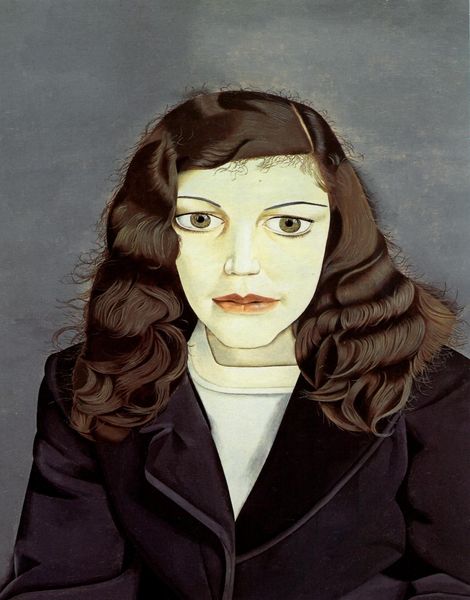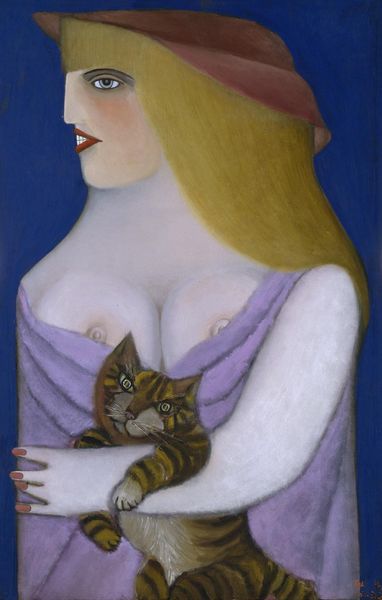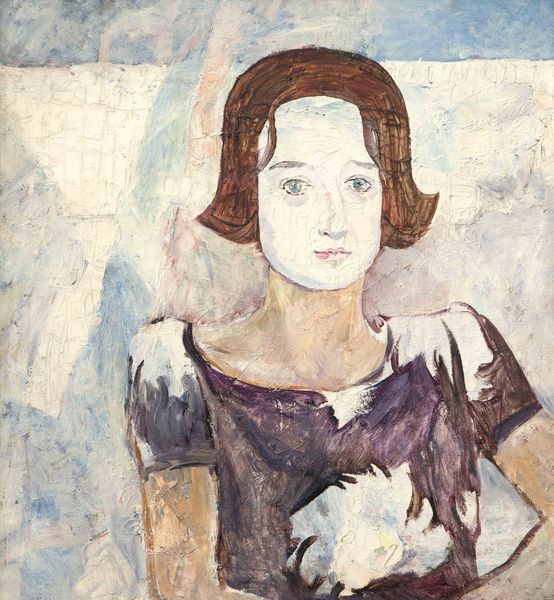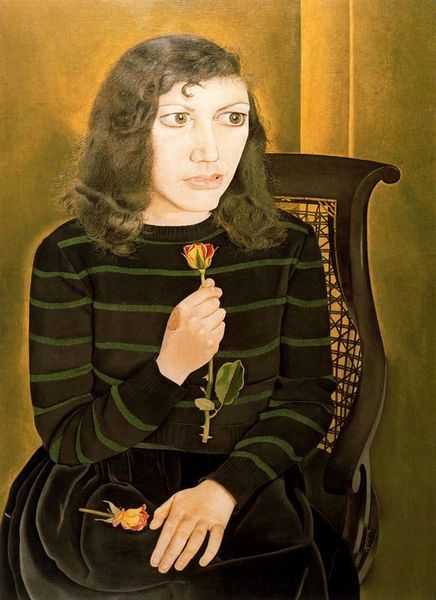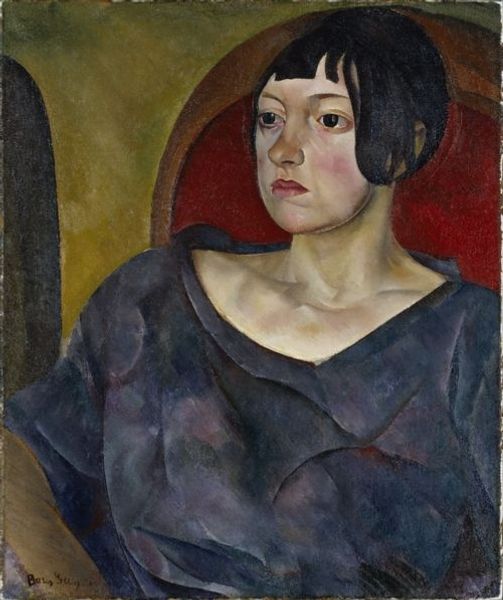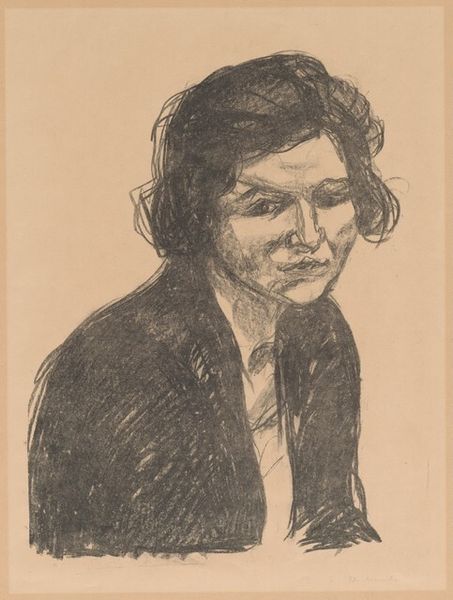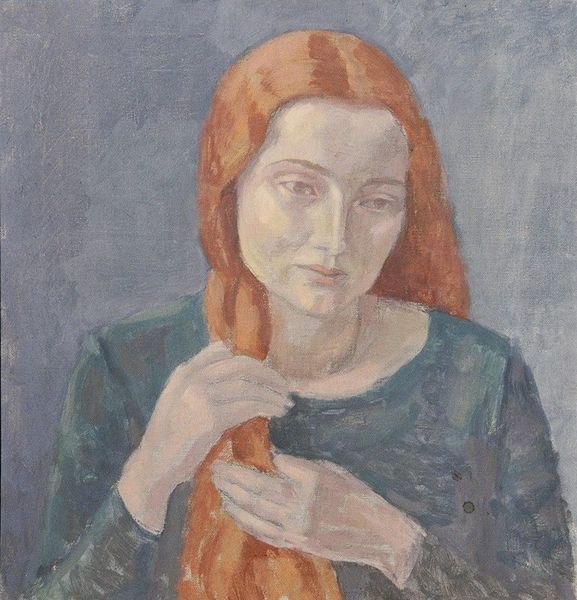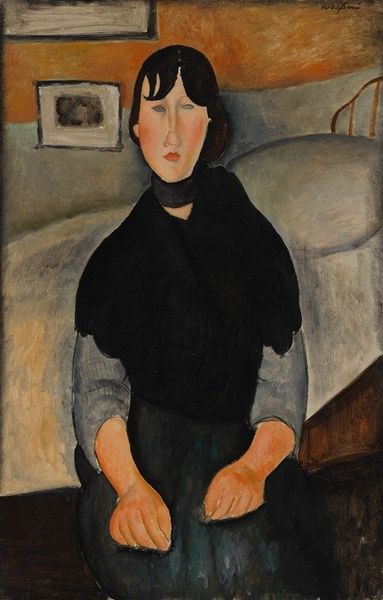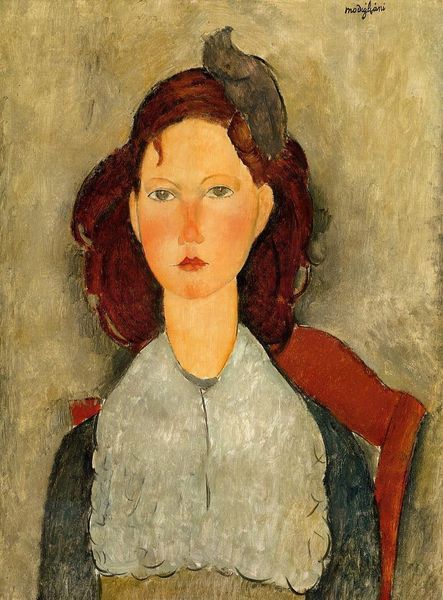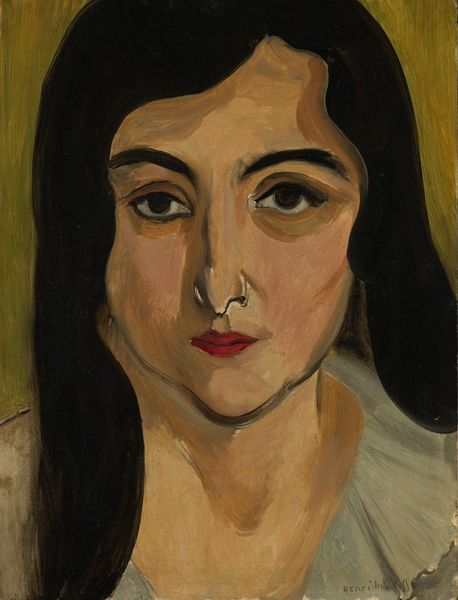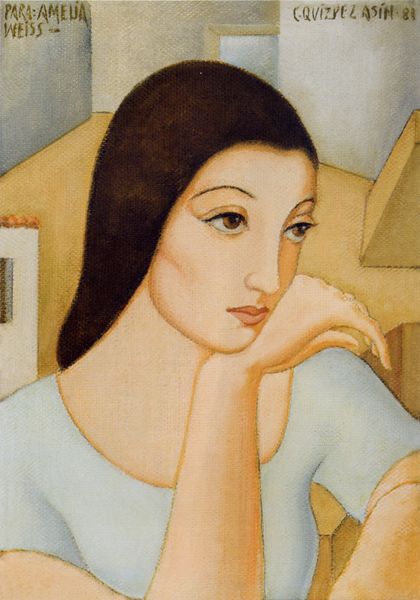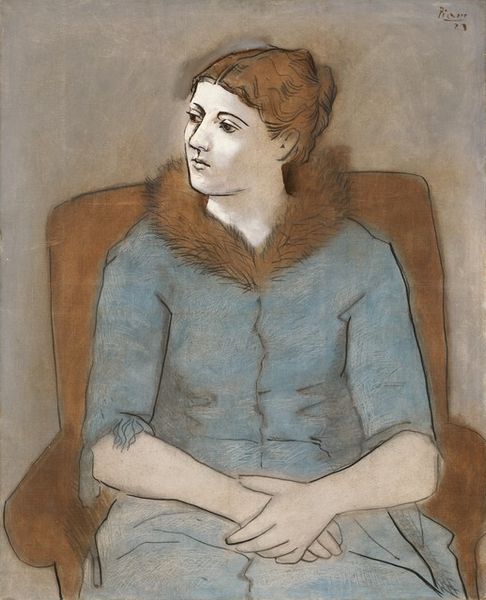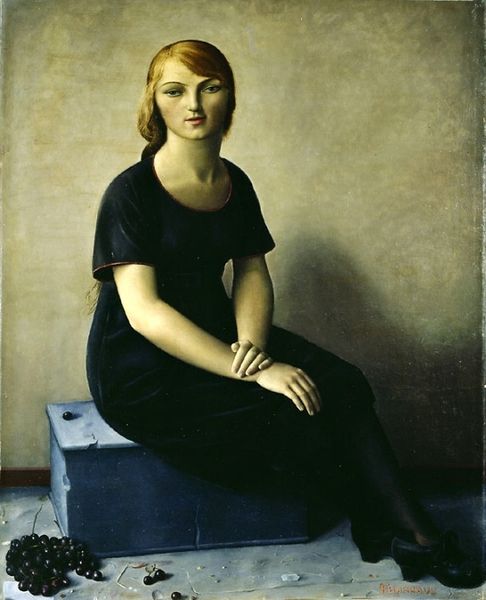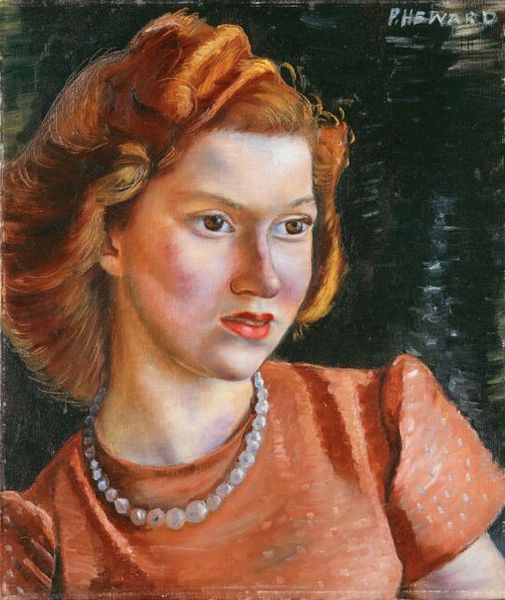
painting, oil-paint
#
portrait
#
painting
#
oil-paint
#
figuration
#
academic-art
#
modernism
#
realism
Dimensions: 29.5 x 39.5 cm
Copyright: Lucian Freud,Fair Use
Editor: This is Lucian Freud’s "Girl with a Kitten," painted in 1947. It's an oil painting depicting a young woman holding a kitten, and it strikes me with its slightly unsettling and vulnerable mood. The girl's gaze seems distant and the way she’s clutching the kitten feels almost protective. How do you interpret this work? Curator: That vulnerability is key, but let’s think about the context. This was painted shortly after the Second World War. Consider the societal expectations placed on women, their limited agency, and the weight of rebuilding a world ravaged by conflict. How might that influence the portrayal of this "girl" and her relationship to the kitten, almost a symbol of fragility itself? Editor: So, you see the kitten not just as a cute pet, but as representative of something more? The vulnerability you mentioned? Curator: Exactly. And consider Freud's later work, often raw and unflinching. This piece hints at that. Is he showing us the delicate balance of power, or the lack thereof, inherent in relationships – both human and with the natural world? Think about whose gaze dominates; is it the girl’s, the kitten’s, or ours as the viewers? Editor: I hadn’t considered the power dynamics at play, especially the girl's. I was so focused on the vulnerability of it all, I overlooked the gaze of the artist and of the viewers. Curator: Right, and it’s easy to fall into the trap of simply seeing a portrait. But Freud's works often challenge conventional portraiture, unsettling notions of beauty and representation. He presents something far more complex than just a likeness. How does it change your reading knowing that his depictions were sometimes considered unconventional or even shocking? Editor: It reframes it completely! I see a critique of idealised femininity and a much deeper reflection on the human condition post-war. It’s less about the surface and more about the anxieties of the time. Thank you. Curator: Precisely. Keep asking those questions, pushing beyond the surface to uncover the layers of meaning within the historical and social fabric.
